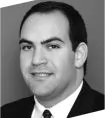As individuals and businesses continue to recover from a devastating hurricane season – including Hurricane Matthew – the Florida Supreme Court today provided policyholders with reason to be optimistic. Under the Florida Supreme Court's decision handed down today in Sebo v. American Home Assurance Company, Inc., Florida policyholders that suffer property loss as a result of multiple perils, at least one of which is covered, are entitled to full insurance coverage even if the other perils are excluded from coverage under the policy.
The Sebo decision arose from a split of authority among Florida appellate courts regarding the proper standard for evaluating coverage when an insured suffers property loss as a result of both covered and excluded causes. In Sebo, the policyholder suffered property damage to his home from rainstorms and Hurricane Wilma, but it was not clear whether the damage also was caused by potentially excluded design and construction defects in the home. The insurer refused to cover the full scope of the storm damage based on a policy exclusion that barred coverage for "any loss caused by faulty, inadequate, or defective . . . design, specifications, workmanship, repair, [or] construction . . ." The insurer denied coverage based on its position that where multiple perils caused the same loss, a loss is only covered if an insured peril was the "efficient proximate cause" of the loss – i.e., the cause "that set the other in motion." Florida's Second District Court of Appeal agreed with the insurer.
On appeal to the Florida Supreme Court, the insurer's position was rejected and the court instead adopted the "concurrent cause doctrine," which holds that there may be coverage "where an insured risk constitutes a concurrent cause of the loss even where the insured risk [is] not . . . the prime or efficient cause of the accident." See Wallach v. Rosenberg, 527 So. 2d 1386 (Fla. 3d DCA 1988). Importantly for policyholders, the court endorsed the view that "[w]here weather perils combine with human negligence to cause a loss, it seems logical and reasonable to find the loss covered by an all-risk policy even if one of the causes is excluded from coverage...."
As a result of the Sebo decision, where it is impossible to determine the sequence of perils leading to a property loss, Florida policyholders must only show that at least one of the perils causing the loss is covered. While celebrating this decision, policyholders should be mindful that because the court did not address anti-concurrent causation language contained elsewhere in the policy, further litigation on this issue may be forthcoming in Florida. Because anti-concurrent causation language has been found by courts in some states to preclude coverage for losses caused concurrently by covered and excluded perils, insurers in Florida will look to insert this language into new and renewal policies to avoid the effect of the Sebo ruling. For this reason, policyholders in Florida, and elsewhere, should embrace the favorable Sebo ruling while avoiding any efforts by insurers to include anti-concurrent causation language in policies in an attempt to undercut Florida law.
This article is presented for informational purposes only and is not intended to constitute legal advice.


